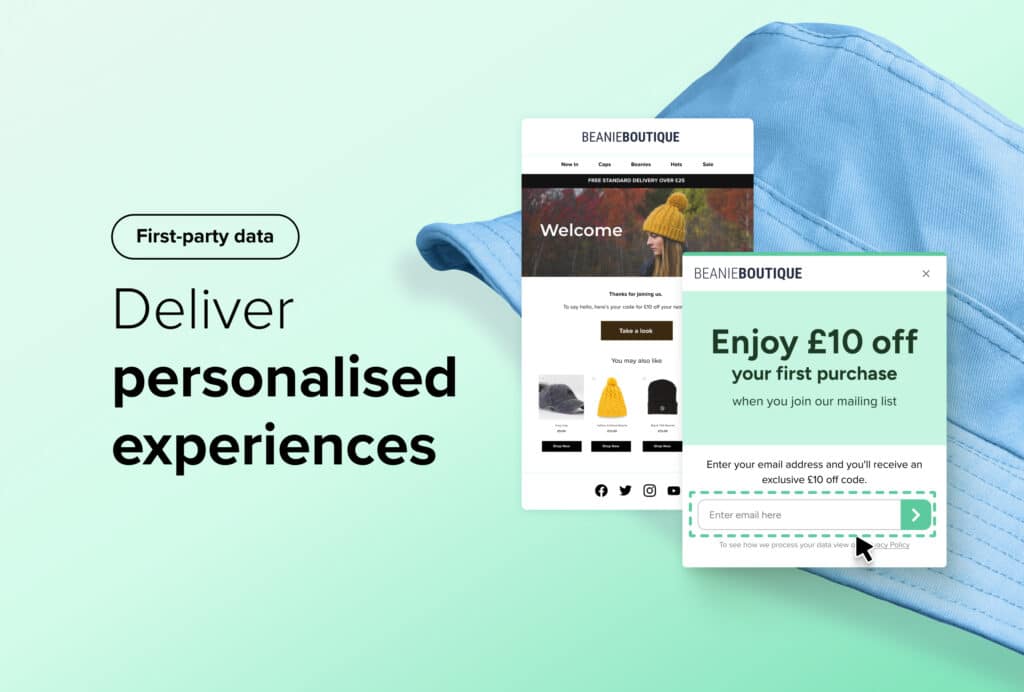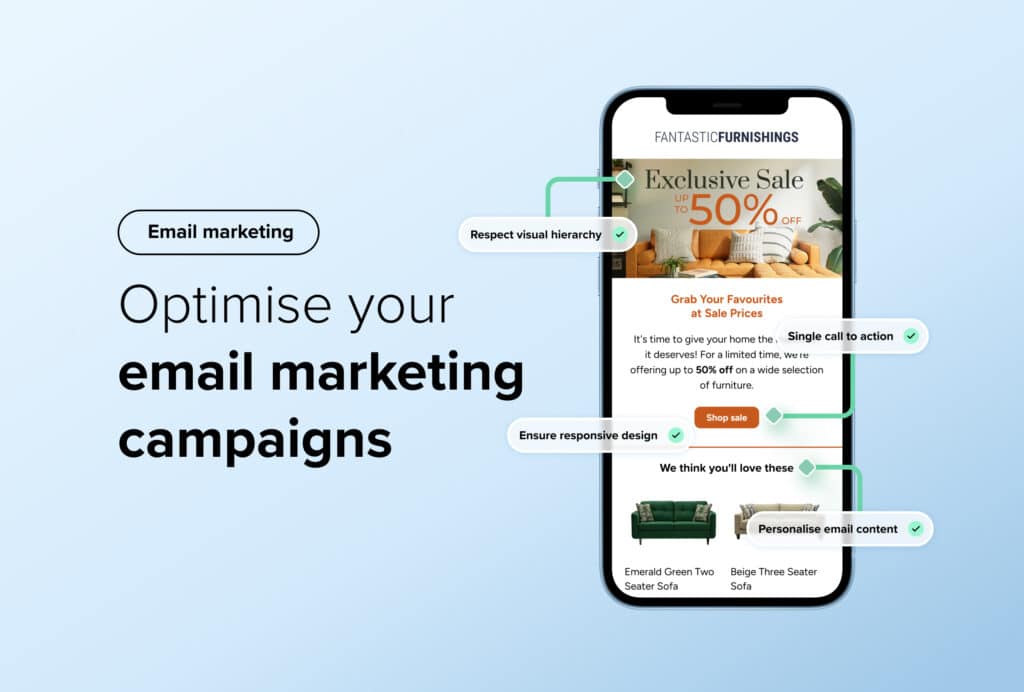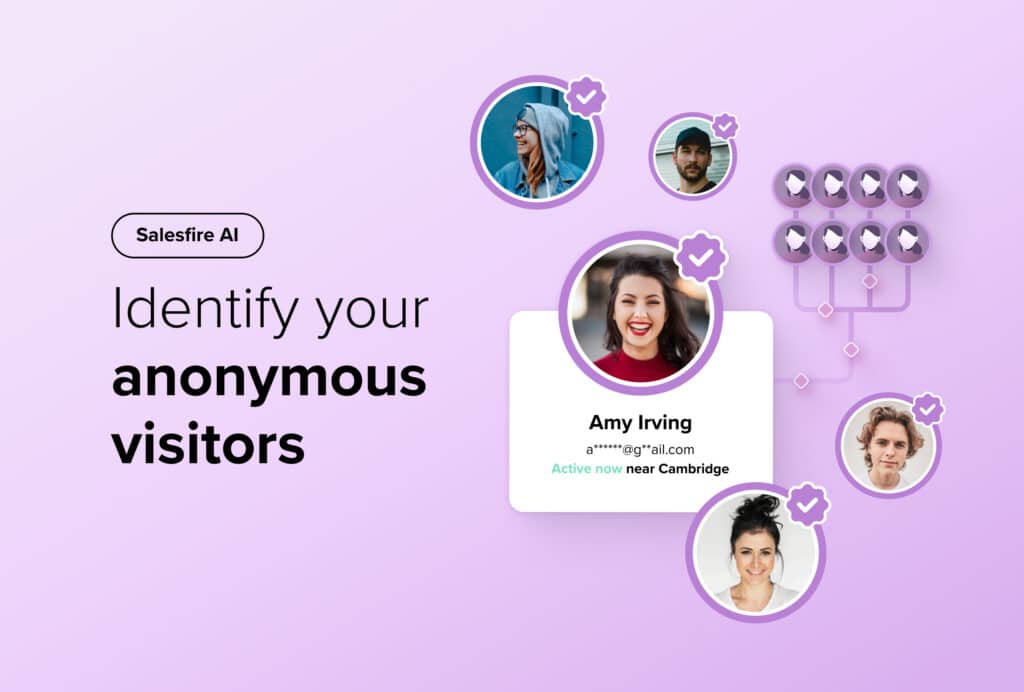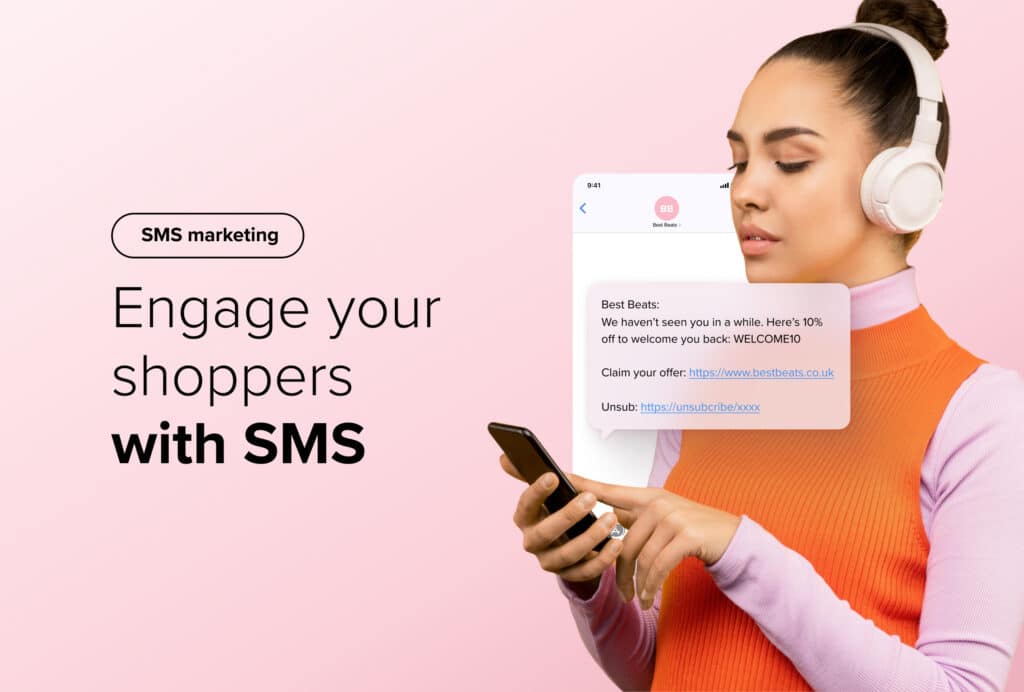How Online Retailers Can Use First-Party Data in Marketing Strategies
By Sophie Walker • Last updated: Tuesday Mar 4th, 2025

Future marketing success hinges on the power of first-party data—it’s a game-changer for businesses.
It acts as a powerful tool for eCommerce retailers, allowing them to better understand the behaviours and motivations of their shoppers.
These insights can then be used to create effective, customer-centric marketing strategies.
Much of the value of this data stems from being collected directly through interactions with a retailer’s website or app.
In this article, we’ll explore how to use first-party data in marketing to enhance your strategies and drive conversions.

Understanding first-party data
First-party data will play a pivotal role as the digital ecosystem adapts to a privacy-first future.
Online marketers have traditionally used third-party data in their advertising and retargeting campaigns.
In contrast, first-party data stands apart from these external data-gathering methods because it’s collected directly from your audience via your own channels, serving as a firsthand account of their interactions and preferences.
Having a bank of this first-party data improves your marketing in many ways, such as:
- Enhancing retargeting capabilities
- Improving personalisation throughout campaigns
- Better segmentation within your audiences
- Increased ownership over your audience data
- Increased transparency and trust around your data practices
First-party data provides a number of benefits to retailers, making it essential to maximise your collection and futureproof your strategies.
Collection methods
So, what are some of the most effective ways brands can collect first-party data collection?
Retailers should look towards:
- Website analytics: You have access to a whole bank of insights through your website and Google Analytics, this will give you a greater understanding of your shoppers and their path to purchase.
- Customer registration: When shoppers create an account on your site, you gain access to data such as full name, address and birthday information.
- Newsletter subscription: As shoppers willingly opt into your newsletter or marketing communications, take the opportunity to collect their email addresses and mobile numbers.
- Purchase history: Use your audience’s purchase history and buying patterns to collect insights into emerging trends.
- Loyalty programs: When your shopper signs up for a loyalty program, you unlock a bank of information on your shopper’s preferences.
Suggested reading: To learn more about how you can collect first-party data, read our article ‘6 Ways to Collect First-Party Data: Sources and Examples’.
Pro tip: As awareness grows around how brands collect and store shoppers’ data online, it’s essential to offer full transparency throughout your eCommerce data collection practices.
You could consider prioritising consent management through:
- Visible privacy policies
- Cookie opt-in/opt-out options
- Consent forms
Offering this information freely will make your shoppers feel more secure about how their data is being handled on your site, increasing the likelihood of a purchase.
How to use first-party data in marketing strategies
For online retailers, access to a richer pool of first-party data will futureproof your business.
Let’s delve into how to use first-party data within your marketing efforts for maximum efficiency.
1. Personalised recommendations
Collecting first-party data allows for greater personalisation through multiple on-site touchpoints.
One way to do this is to deploy AI-driven Recommendations.
This eCommerce solution is powered by analysing existing customer data, such as purchasing history and browsing behaviours, to tap into your shopper’s preferences.
This tailored approach increases user engagement and drives effortless sales by showcasing products that align with your shopper’s personal wants and needs.
Across your on-site Recommendations units, you can leverage multiple slot strategies and intelligent algorithms to create a complete customer journey.
We suggest that you use the following Recommendation strategies to optimise the entire user journey:
- New in: Grab the attention of shoppers as they enter the buying funnel by displaying your newest products on your homepage.
- Personalised: Showcase products based on the behavioural profile of each of your customers. We suggest deploying this strategy on your product pages to maximise product discovery and extend the customer journey.
- Bought together: Encourage users to build bigger baskets by recommending products that are often purchased with the item the shopper is viewing.
By using dynamic Recommendations at multiple touchpoints throughout the browsing experience and leaning into AI-powered algorithms, you can unlock more conversions for your brand.
2. Targeted email marketing
A customer’s email address provides endless opportunities for your brand.
So you must be doing everything you can to maximise data collection on your site. This will allow you to grow a robust list of email contacts.
It’s important that you surface your data collection messaging at optimal times in the on-site journey.
This could make or break your efforts of collecting email addresses and mobile numbers.
When done successfully with the help of Salesfire’s optimised data capture technology, footwear retailer, Charles Clinkard, experienced:
- A 51% increase in email subscribers.
- 42% of new data entries went on to submit their SMS data.
As an online store looking to get ahead and take ownership of its data, deploying high-performing data-collection strategies is now essential for survival.
What you can do: Once you’ve maximised your email data collection you can send highly targeted campaigns directly to your customers through Email Sequences.
Informed by your shopper’s behavioural profiles, you can include features in your emails to enhance customer engagement:
- Personalised recommendations: By including recommendations within your campaigns you encourage shoppers to return to your site to explore more products that align with their interests.
- Exclusive offers: Provide exclusive discounts to your disengaged customers to encourage them to make another purchase.
- Tailored content: Reconnect shoppers to their perfect purchase with emails personalised to their previous on-site behaviour and purchases.
By leveraging your shopper’s individual tastes throughout your emails you effortlessly foster long-term customer loyalty and increase conversions.
Suggested reading: Discover actionable tips to leverage your email data collection in our article, ‘The Power of Email Subscribers’.
3. Customised website experiences
First-party data can be used to tailor on-site experiences and meet the demands of modern shoppers who expect personalisation as standard.
Online retailers can use data such as browsing behaviours, previous transactions and preferences to customise the experience for every one of their shoppers.
To achieve this, display relevant On-Site Messaging and promotions to shoppers that relate directly to their interests.
Extend your efforts further by dynamically adjusting your website content to each visitor’s preferences.
As mentioned above, we recommend achieving this by using Recommendations to show different product recommendations based on a user’s previously viewed items.
Using first-party data to craft customised website experiences in this way will enable you to engage and satisfy your customers, ultimately securing more sales.
Pro tip: Take advantage of On-Site Messaging to target shoppers who show intent to leave your site.
Using Salesfire’s intelligent exit intent technology, you can prevent site abandoners with campaigns that:
- Provide a discount incentive: Give your shoppers a final push to complete their purchase at exactly the right time by offering them an incentive.
- Display your USPs: If you’re looking for an alternative to offering a discount, you could consider displaying all your unique selling points or the perks of choosing your brand.
This highly targeted messaging will encourage browsers to stay on-site, reduce bounce rates and encourage completed purchases.
4. Segmenting audiences
First-party data provides retailers with the perfect opportunity to segment their audiences more effectively.
As shoppers interact with your site and browse through your catalogue, you can create highly accurate profiles of your shoppers based on their:
- Demographic information
- Purchasing behaviour
- Engagement levels
You can then segment your audiences into highly specific lists and send tailored marketing campaigns.
By doing this you not only improve the effectiveness of your campaigns but also drive higher conversion rates through genuinely relevant communications.
5. Retargeting campaigns
In a competitive online market, it’s commonplace to see shoppers leave a site before they make a purchase.
To recover these sales, it’s essential to prioritise the implementation of retargeting campaigns.
First-party data allows you to serve retargeting ads to shoppers who previously visited your site or expressed interest in products but didn’t make a purchase.
By delivering targeted campaigns across various channels you can encourage lost visitors to finalise their purchase whilst driving incremental sales.
What you can do: Alongside your multichannel advertising strategy consider deploying a high-performing Email Sequences campaign to retarget your lost shoppers.
Deploy an abandoned orders email sequence to remind your email subscribers of the products they’ve left behind and re-inject disengaged customers back into the buying funnel.
Suggested reading: To discover how to improve the effectiveness of your cart recovery emails read our article, ‘Unlocking Hidden Revenue for Fashion Retailers: The Ultimate Basket Abandonment Checklist’.
6. Loyalty programs and rewards
As a retailer, you can use first-party customer data to inform your approach to loyalty programs and rewards initiatives.
By tracking customer activity and preferences, brands come to learn what motivates their audiences to make a purchase.
With this understanding, you can replicate these motivations through the rewards you offer to your most loyal customers.
You can do this by offering:
- Personalised rewards
- Discounts for repeat shoppers
- Exclusive sale access
- Product sneak peeks
By analysing your existing shopper’s habits, you can deploy genuinely relevant incentives and rewards that encourage repeat purchases and long-term loyalty.
7. Predictive analytics
An important role of first-party data in marketing is its ability to make predictions about future customer behaviour and purchasing trends.
By analysing your website or Google Analytics, you gain a clearer insight into current trends to forecast for the future.
This enables you to:
- Anticipate the wants and needs of their customers
- Optimise inventory management and buying
- Tailor marketing strategies towards emerging opportunities
First-party data analysis allows retailers to remain ahead with their marketing efforts and capitalise on up-and-coming trends.
Pro tip: Using your Recommendations unit, you can opt for the ‘Most Popular’ slot strategy.
This allows you to display items that have been purchased the most from your product catalogue in the past 30 days.
This works to increase the visibility of your popular and trending items to secure sales.
Leverage first-party data for marketing success
Strategies that stand out in a competitive marketplace are guided by first-party data.
In today’s unpredictable landscape, they work to successfully improve user engagement, increase long-term loyalty and drive revenue growth for your brand.
A bank of reliable, first-party data empowers online retailers to create highly personalised and effective marketing, securing their future.

To discover how Salesfire can help you maximise your first-party data, email one of our experts at enquiries@salesfire.com or book a free demo of our tools.



